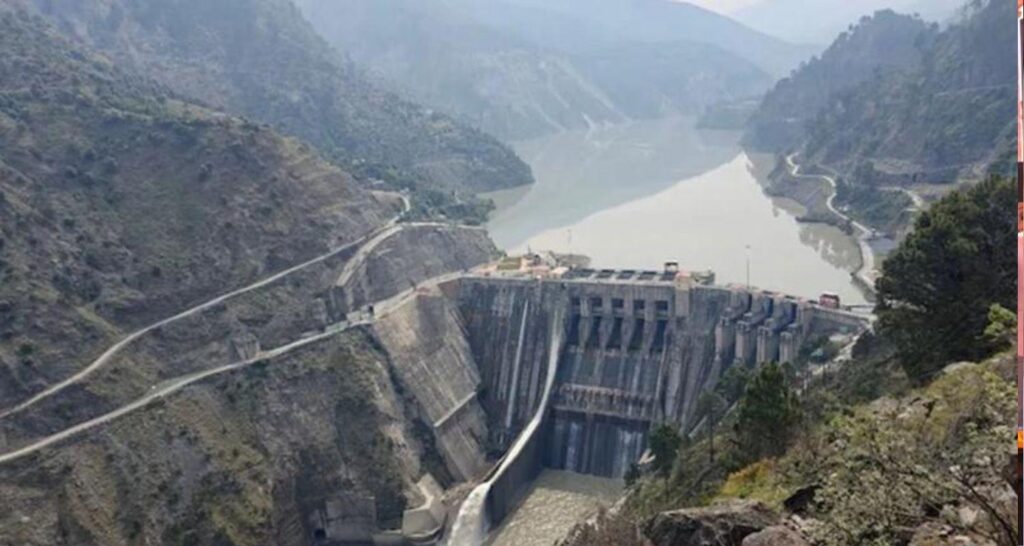PRELIMS
Unified Markets Interface (UMI)
Why in News: The Reserve Bank of India (RBI) has launched the Unified Markets Interface (UMI) — a blockchain-based financial infrastructure for asset tokenisation, integrating wholesale Central Bank Digital Currency (CBDC) and the Account Aggregator (AA) framework to enhance efficiency and transparency in financial markets.

About UMI:
- Announced in 2025 by RBI Governor Sanjay Malhotra.
- Converts physical assets into digital tokens, enabling fractional ownership and global trading.
- Uses smart contracts to speed up settlements and reduce costs.
- Promotes market transparency and wider access to investors.
Integration with Wholesale CBDC:
- Wholesale CBDC = digital form of central bank money used for interbank settlements.
- Ensures secure, quick, and transparent transactions within UMI.
Account Aggregator (AA) Framework:
- Allows individuals to safely share financial data via Financial Information Providers (FIPs) and Users (FIUs).
- Presently: 17 AAs, covering 160 million accounts.
- RBI plans to enhance user experience, data security, and consent transparency.
New RBI Products:
- UPI HELP, IoT Payments, Banking Connect, and UPI Reserve Pay introduced to expand digital financial services.
Significance:
- UMI and AA mark India’s shift toward tokenised, data-driven, and inclusive financial markets, strengthening the country’s digital financial infrastructure.
Giant New Fungus Species
Why in News: Scientists from the Botanical Survey of India (BSI) have discovered a new giant fungus species named Bridgeoporus kanadii in the forests of Arunachal Pradesh. It is remarkable for its massive fruiting body (over 3 metres in radius) and key role in forest nutrient cycling.

About Bridgeoporus kanadii:
- Discovered by: BSI during a monsoon mushroom survey in Northeast India.
- Named after: Indian mycologist Dr. Kanad Das for his work on macrofungi.
- Habitat: Found on old, decaying fir trees, often in clusters of about 40.
- Local status: Known to locals but inedible and without economic value.
Distinctive features:
- Fruiting body radius >3 metres (vs. B. nobilissimus at ~1.5 m).
- Woody, thick, and firmly attached to tree trunks.
- DNA sequencing confirmed it as a new species within the Bridgeoporus genus.
Ecological Significance:
- Bridgeoporus fungi are wood-decaying species, breaking down cellulose and lignin in dead trees.
- Enable nutrient recycling, carbon turnover, and soil fertility.
- Prevent accumulation of undecomposed matter, sustaining forest ecosystem balance.
Static Information – Fungi
- Kingdom: Fungi (distinct from plants and animals).
- Cell type: Eukaryotic, with chitin-rich cell walls (not cellulose).
- Mode of nutrition: Heterotrophic – absorb nutrients through extracellular digestion.
- Reproduction: By spores (sexual and asexual).
Ecological roles:
- Decomposers (saprophytes) – recycle nutrients.
- Mutualists – form mycorrhizae with plants.
- Parasites – cause diseases in plants and animals.
Examples of major groups:
- Basidiomycota – mushrooms, puffballs (Bridgeoporus belongs here).
- Ascomycota – yeasts, morels.
- Zygomycota – bread mould (Rhizopus).
Sawalkote Hydropower Project
Why in News: The Union Environment Ministry’s apex committee has granted fresh environmental clearance to the Sawalkote Hydroelectric Project located on the Chenab River in Ramban and Udhampur districts of Jammu & Kashmir.

About Sawalkote Hydropower Project:
- Type: Large run-of-the-river hydroelectric project.
- River: Chenab River.
- Location: Ramban and Udhampur districts, Jammu & Kashmir (Union Territory).
- Developer: National Hydroelectric Power Corporation (NHPC).
- First Initiated: 1984.
- Installed Capacity: 1,856 MW (Largest in J&K when completed).
- Stage I: 1,406 MW (Forest clearance received).
- Stage II: 450 MW.
Structure:
- Dam Type: Roller-Compacted Concrete (RCC).
- Height: 192.5 metres.
- Powerhouses: Underground, designed to generate ~7,500–8,000 million units of electricity annually.
Significance:
- It will be the largest hydropower project in the Union Territory upon completion.
- Provides peaking power to northern states, enhancing energy security and grid stability.
- Strategic importance in optimally utilising the Chenab River’s hydro potential.
- Expected to bolster infrastructure development and employment in the region.
2025 Nobel Peace Prize
Why in News: The 2025 Nobel Peace Prize has been awarded to María Corina Machado, Venezuelan opposition leader, for her tireless efforts to promote democracy, human rights, and peaceful political transition in Venezuela.

About María Corina Machado:
- Born: 1967, Caracas, Venezuela.
- Education: Studied Industrial Engineering at Universidad Católica Andrés Bello and Finance at IESA.
- Founder: Vente Venezuela political party – advocates democracy and civil liberties.
- Co-founder: Súmate (2002) – promotes free and fair elections in Venezuela.
Political Career:
- Served in National Assembly (2010–2014).
- Expelled for opposing the government.
About Her Work and Contributions:
- Democracy Advocate: Championed free elections and constitutional governance.
- Unifying Opposition: Helped build the Soy Venezuela Alliance (2017) to unite pro-democracy forces.
- Non-violent Resistance: Promotes peaceful civic struggle against authoritarianism.
- Symbol of Defiance: Persisted despite political persecution and bans.
Global Recognition:
- Described by Nobel Committee as “a woman who keeps the flame of democracy burning amidst growing darkness.”
- Represents global solidarity with Venezuela’s democratic struggle.
- Reinforces the role of women leaders in advancing peace and justice.
Related Fact:
2024 Nobel Peace Prize: Awarded to Nihon Hidankyo, a Japanese organisation of Hiroshima and Nagasaki atomic bomb survivors, for advocating nuclear disarmament and global peace.
4G stack
Why in News: At the India Mobile Congress (IMC) 2025, Prime Minister Narendra Modi announced India’s plan to export its indigenously developed 4G stack, marking a major step towards digital self-reliance and global tech competitiveness—seen as a counter to China’s Digital Silk Road.

About India’s 4G Stack
- Developed by: Bharat Sanchar Nigam Ltd (BSNL), Tejas Networks, Tata Consultancy Services (TCS), and Centre for Development of Telematics (C-DoT).
- Nature: India’s first indigenously developed 4G technology stack including both telecom hardware and software.
- Objective: Reduce dependency on foreign telecom vendors like Huawei and ZTE, and build local capability.
Key Features
1. Radio Access Network (Tejas) and Core Network (C-DoT) developed domestically.
2. Self-reliant system: Enables operation of 4G and 5G services without foreign equipment.
3. 5G-ready: Allows easy upgradation and faster migration to 5G infrastructure.
4. Digital Public Infrastructure Integration: Complements India Stack—UPI, Aadhaar, DigiLocker, etc.—for global export as “Digital Public Goods.”
Significance
- Technological Sovereignty: Promotes Atmanirbhar Bharat in telecom sector.
- Export Ambition: Aims to provide cost-effective, scalable telecom solutions to developing nations.
- Strategic Diplomacy: Strengthens India’s digital influence as a reliable alternative to Chinese telecom ecosystem.
China’s Digital Silk Road (DSR)
- Part of the Belt and Road Initiative (BRI).
- Finances and builds telecom and digital infrastructure across developing countries.
- Led by Chinese firms like Huawei and ZTE to expand China’s tech dominance.
- Includes mobile networks, cloud services, and e-commerce platforms supporting China’s global trade.

